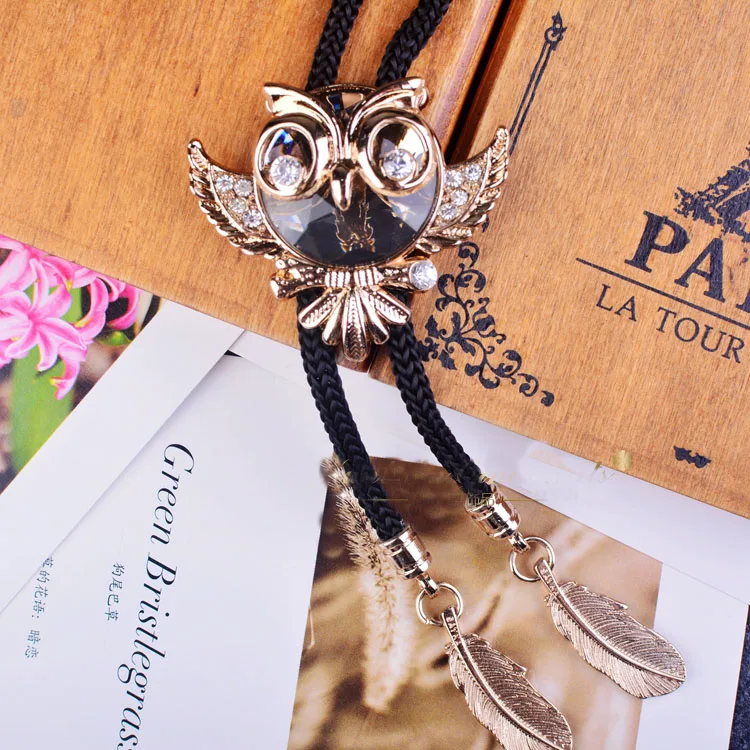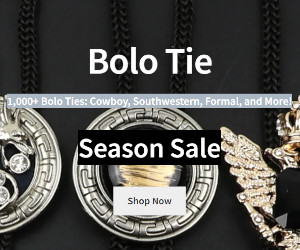
Introduction: The Resurgence of Bolo Ties
Bolo tie accessories, once regarded as a niche item primarily associated with Western fashion and cowboy culture, have experienced a remarkable resurgence in recent years. This iconic neckwear has evolved from a regional staple to a global fashion statement, embraced by both traditionalists and trendsetters. The shopping season, typically peaking during specific times of the year, offers a unique opportunity for enthusiasts to explore the diverse styles, materials, and designs that this accessory has to offer.
In this comprehensive guide, we’ll delve into the history and cultural significance of jewelry, examine the current trends driving their popularity, and provide essential tips for making the most of the shopping season. Whether you’re a seasoned collector or a first-time buyer, this article will equip you with the knowledge you need to find the perfect tie that suits your style and occasion.
The Rich History and Cultural Significance of Bolo Ties
The bolo tie, also known as a bola tie or shoestring necktie, has deep roots in the American Southwest, particularly among Native American tribes and Western cowboys. Its origins are often traced back to the mid-20th century when it was popularized by silversmith Victor Cedarstaff in Arizona. Cedarstaff is credited with designing the modern version, inspired by the leather cords traditionally used to secure cowboy hats.
However, its history extends far beyond its 20th-century commercialization. Native American artisans, particularly from the Navajo, Hopi, and Zuni tribes, have long created intricate neckwear adorned with silver, turquoise, and other natural materials. These accessories were not merely fashion statements but also symbols of cultural identity, craftsmanship, and spiritual significance.
In 1971, it was officially recognized as the official neckwear of Arizona, solidifying its place in American culture. Other states, including New Mexico and Texas, have followed suit, further embedding this accessory into the cultural fabric of the American Southwest.
The Modern Appeal of Bolo Ties: Fashion Meets Tradition
While this have always been a staple in Western and Southwestern fashion, their modern appeal has transcended regional boundaries. Today, they are worn by individuals from diverse backgrounds and are often seen on runways, red carpets, and in street fashion.
One of the key factors driving the resurgence of this accessory is its versatility. Unlike traditional neckties or bow ties, they can be dressed up or down, making them suitable for a wide range of occasions. Whether paired with casual denim jackets or a formal suit, they offer a unique blend of ruggedness and sophistication.
Celebrities, fashion influencers, and designers have also played a significant role in reintroducing ties to a global audience. High-profile figures like Johnny Depp, Bruno Mars, and Timothée Chalamet have been spotted wearing them, sparking renewed interest in this classic accessory. Fashion houses like Ralph Lauren and Gucci have incorporated them into their collections, further cementing their status as a fashionable choice.
When Is Bolo Tie Shopping Season?
Bolo tie shopping season typically coincides with several key events and seasons throughout the year. Understanding these peak periods can help you plan your purchases and find the best deals.
- Holiday Season (November to December): The holiday season is one of the busiest times for shopping. Many people purchase them as unique and meaningful gifts for loved ones. Their connection to tradition and craftsmanship makes them a thoughtful gift choice. Additionally, holiday sales and promotions offer a chance to find high-quality options at discounted prices..
- Western Wear Events and Rodeos (Spring and Summer): Spring and summer are prime seasons for Western-themed events, including rodeos, country music festivals, and state fairs. These events often feature vendors selling ties, and attendees frequently purchase them to complete their Western-inspired outfits. If you’re attending one of these events, it’s the perfect time to shop for a tie that matches your ensemble.
- Weddings and Formal Events (Year-Round): This have become increasingly popular as an alternative to traditional neckwear at weddings and other formal events. Grooms and groomsmen, particularly in Western-themed or rustic weddings, often opt for ties to add a touch of individuality to their attire. If you’re planning a wedding or attending a formal event, shopping should be on your to-do list.
- Native American Art Markets (Summer and Fall): Native American art markets, such as the Santa Fe Indian Market, are excellent places to find authentic, handcrafted ties. These markets typically take place in the summer and fall and attract artisans from various tribes who showcase their work. Shopping at these markets not only supports Indigenous artists but also allows you to acquire a tie with deep cultural significance.
- Fashion Weeks (Spring and Fall): Fashion weeks in major cities like New York, Paris, and Milan often set the tone for upcoming trends. During these events, These may appear on runways, inspiring designers and fashion enthusiasts alike. If you want to stay ahead of the curve, consider shopping for ties during or after fashion week to incorporate the latest trends into your wardrobe.
Styles and Materials: Choosing the Right Bolo Tie
It come in a wide variety of styles, materials, and designs, making it essential to understand your options before making a purchase. Here are some key factors to consider when shopping for a tie:
- Material: The material of the cord and slide is crucial to its overall appearance and durability. Common materials for the cord include leather, suede, and braided fabric. The slide, or clasp, is often made of metal, such as silver or brass, and may feature inlays of turquoise, onyx, or other stones. For a more traditional look, opt for a tie with a leather cord and a silver slide adorned with turquoise. If you’re seeking a contemporary style, consider ties with sleek metal slides and minimalist designs.
- Design: The design of the slide is the focal point of the tie. Traditional designs often feature Native American motifs, such as eagles, arrows, and geometric patterns, while modern designs may incorporate abstract shapes, animals, or even pop culture references. When choosing a design, consider the occasion and your personal style. A bold, ornate slide may be perfect for a statement piece, while a simple, elegant design might be more suitable for everyday wear.
- Length: The length of cord is another important consideration. Most are adjustable, allowing you to wear them at different lengths depending on your outfit and preference. However, some are designed to be worn at a specific length. Make sure to choose a length that complements your neckline and overall look, ensuring it enhances your style and provides a comfortable fit.
- Color: While traditional ties often feature neutral colors like black, brown, and silver, modern designs come in a wide range of colors. If you’re looking for a versatile option, stick to classic colors that can be easily paired with various outfits. If you’re feeling adventurous, experiment with bold colors or patterns to make a statement.
- Authenticity: If you’re interested in purchasing one with cultural or historical significance, authenticity is key. Look for crafted by reputable artisans or brands, particularly those with a history of producing high-quality pieces. If possible, purchase directly from Native American artists or trusted retailers who specialize in Indigenous art and jewelry.
Tips for Shopping During Bolo Tie Season
These shopping season can be an exciting time, but it can also be overwhelming given the wide range of options available. Here are some tips to help you navigate the season and make informed purchases:
- Set a Budget: These can vary significantly in price, depending on factors like material, design, and authenticity. Before you start shopping, determine your budget and stick to it. This will help you narrow down your options and avoid impulse purchases.
- Do Your Research: Familiarize yourself with the different styles, materials, and brands available before making a purchase. Read reviews, visit online forums, and consult with experts if necessary. This research will ensure that you make an informed decision and choose a tie that meets your expectations.
- Shop Early: If you’re shopping during a peak season, such as the holidays or a major event, it’s wise to start early. Popular designs and sizes can sell out quickly, so getting a head start will give you access to a wider selection.
- Consider Customization: For a truly unique tie, consider ordering a custom piece. Many artisans offer customization options, allowing you to choose the materials, design, and length that best suit your preferences. Keep in mind that custom orders may take longer to produce, so plan accordingly.
- Check Return Policies: Before making a purchase, review the retailer’s return policy. This is especially important if you’re buying a tie as a gift or if you’re unsure about the fit or style. A flexible return policy will give you peace of mind and allow you to make adjustments if necessary.
Bolo Tie Maintenance and Care
Once you’ve found the perfect bolo tie, it’s important to take care of it to ensure it lasts for years to come. Proper maintenance will keep it looking its best and prevent damage to the materials.
- Cleaning: Regularly clean to remove dirt, oils, and other residues that can accumulate over time. Use a soft, dry cloth to wipe down the cord and slide. For more stubborn dirt or tarnish on metal slides, you can use a mild jewelry cleaner. Avoid using harsh chemicals or abrasive materials, as they can damage the surface of the tie.
- Storage: Store in a cool, dry place when not in use. To prevent tangling or damage to the cord, consider hanging it on a hook or storing it in a jewelry box with compartments. If your tie features natural stones, such as turquoise, keep it away from direct sunlight, as prolonged exposure can cause fading or discoloration.
- Avoid Moisture: Moisture can weaken the cord and cause tarnishing or rusting on metal slides. Avoid wearing in humid environments or during activities where it may come into contact with water, such as swimming or showering.
- Handle with Care: When adjusting the length, do so gently to avoid putting unnecessary strain on the cord or slide. If the slide becomes difficult to move, it may be time to clean or lubricate the clasp mechanism.
Conclusion: Embracing the Bolo Tie Shopping Season
These shopping season is more than just a time to purchase a fashionable accessory—it’s an opportunity to connect with a rich cultural tradition and express your individuality through style. Whether you’re drawn to the timeless appeal of a classic tie or the bold, modern designs that are making waves in the fashion world, there’s one out there for everyone.
By understanding the history, significance, and current trends surrounding it, you’ll be well-equipped to navigate the shopping season and find a piece that resonates with you. So, as you embark on your shopping journey, remember to embrace the spirit of adventure, creativity, and tradition that this iconic accessory embodies.


